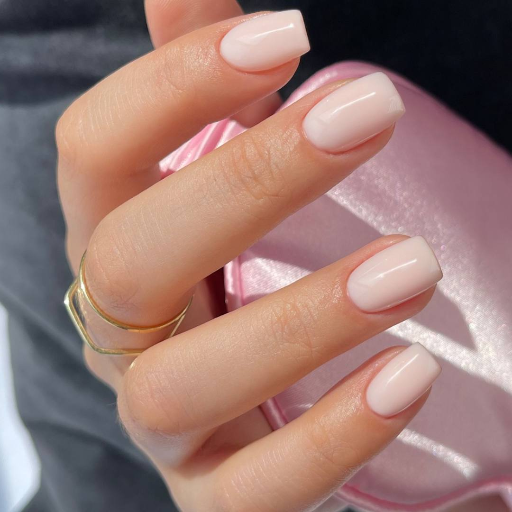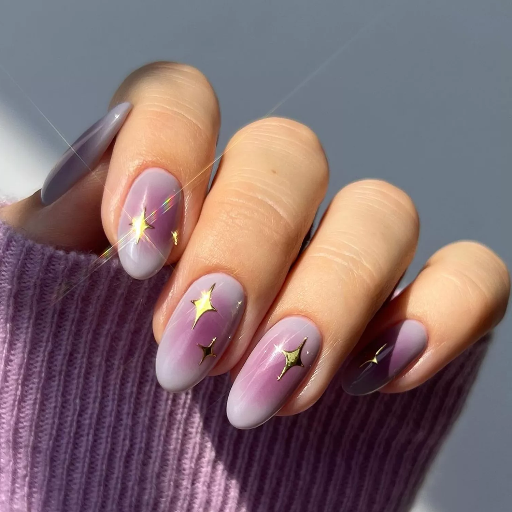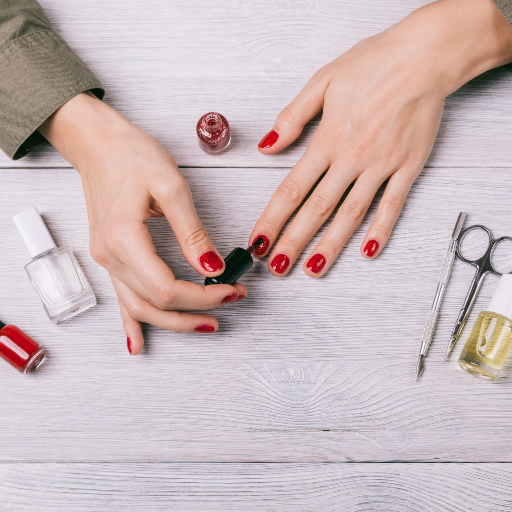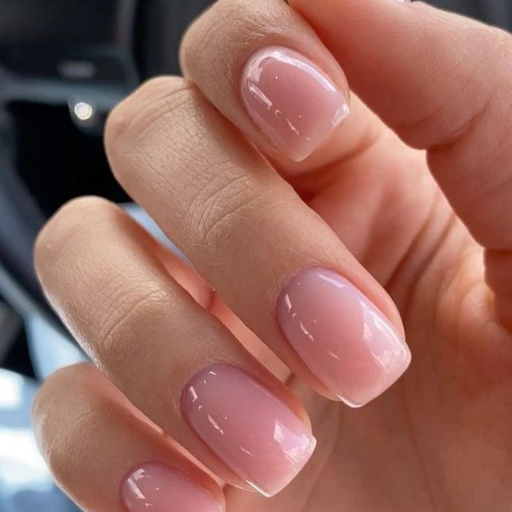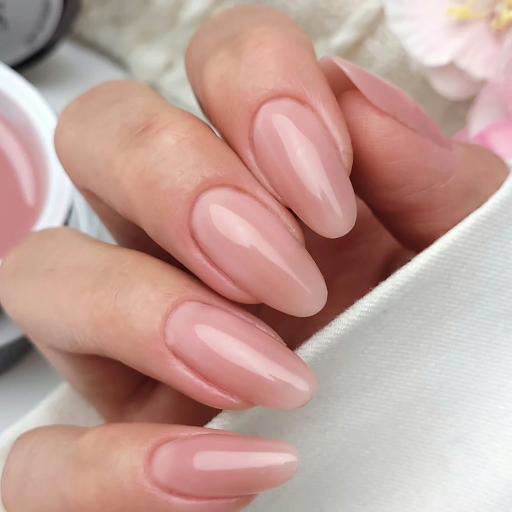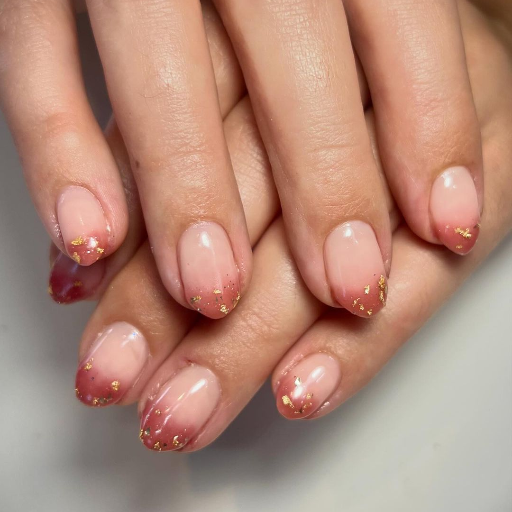We appreciate you joining us for our complete overview of certain unfamiliar terms within the world of sun protection such as the term SPF. Regardless of what you have heard about sunscreens in terms of their protection factor, this article will attempt to break all these misconceptions. Besides getting an in-depth idea about sunscreen SPF, this article will try to answer whether sunscreens with a higher SPF truly advertise being found with a 100% protection level. Additionally, we will explain UVA and UVB protection filters, how effective high SPF sunscreens are, and give you practical advice so that the best sunscreen with the right SPF is selected according to your requirements. All of this information will be necessary for instilling confidence and making informed choices that pertain to sun protection measures. Let’s get started!
What is the Importance of sunscreen SPF?
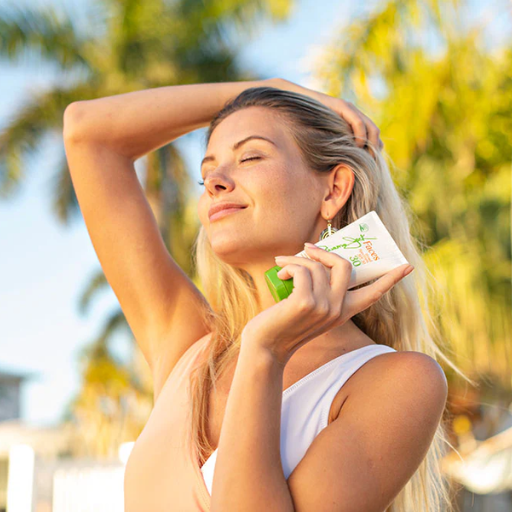
Sunscreen SPF (Sun Protection Factor) plays a crucial role in shielding our skin against harmful UV (ultraviolet) rays from the sun. It measures the level of protection a sunscreen provides against UVB rays, which are responsible for sunburns. Here are some key points to understand the importance of sunscreen SPF:
- Does SPF 100 Provide 100% Protection? Despite the high number, SPF 100 does not offer 100% protection. No sunscreen can provide absolute protection from the sun. SPF 100 blocks about 99% of UVB rays, while SPF 30 blocks around 97%. The difference is minimal, making SPF 30 an effective choice for most people.
- UVA and UVB Protection: Sunscreens labeled as “broad-spectrum” protect against both UVA and UVB rays. UVA rays can lead to skin aging and wrinkles, while UVB rays cause sunburn. Look for broad-spectrum sunscreens to ensure comprehensive protection.
- Effectiveness of High SPF Sunscreens: While high SPF sunscreens provide slightly more protection against UVB rays, the increase is marginal compared to lower SPF options. Proper application, frequent reapplication, and other sun protection measures, like seeking shade and wearing protective clothing, are equally important.
- Choosing the Right SPF: The right SPF depends on various factors, including skin type, sensitivity to the sun, and duration of sun exposure. SPF 30 is generally sufficient for everyday use, but consider higher SPF options for prolonged outdoor activities or if you have fair or sensitive skin.
Understanding these aspects of sunscreen SPF empowers you to make informed decisions about sun protection, ensuring that you choose the right sunscreen and take appropriate measures to safeguard your skin from the damaging effects of the sun.
How does the sun protection factor work?
The Sun Protection Factor (SPF), often stamped onto a sunscreen bottle, refers to the ability of the sunscreen to shield one from the damaging effects of ultraviolet (UV) radiation. But, what is its exact mechanism?
UVB rays are known for causing sunburn hence it comes as no surprise that staff that contribute towards skin cancer are rated with high SPF measures. Therefore, the higher the SPF rating, the greater the sunscreen’s enhanced capabilities to block harmful UVB rays.
It is evident that no skin is the same, some may be more sensitive to rays than others and will require more time to recover than others. A good example of this would be SPF 30, which can protect people with sensitive skin against ultraviolet rays for about 300 minutes, assuming that the unprotected skin would take 10 minutes to burn.
SPF 30 provides around 97% protection, SPF 50 provides 98% and also SPF 15 provides around 93%. However, it’s a common misunderstanding that if a sunscreen provides a high SPF, say 30 for example, that means a person is 30 times more secure against UVB rays when in reality only a small percentage of humans are.
Here, it is indispensable to mention that the SPF does not account for the UVA protection ratings, it only specifies how much UVB protection is applied. UVA radiation is the primary cause of severe skin damage in the long term and also in the moderate term it leads to skin aging. In this regard, it is advisable to use sunscreen with broad-spectrum filters that can block both UVA and UVB radiation.
Never forget that adequate sun protection requires the right application and re-apply. The skin should be liberally slathered with enough oil to coat all exposed surfaces of the skin 15 minutes before going into the sun and every two hours or even more frequently after strenuous exercise, physical work, sweating, or swimming.
With a clear idea of how the sun protection factor works and how to pick the correct sun protection factor life with broad-spectrum protection, you can enjoy being outside without having to worry about damaging your skin due to the sun’s rays.
Why choose a sunscreen with high SPF?
While picking a sunscreen lotion, there are several benefits to selecting a Large SPF. Let’s take a look at reasons for choosing a high SPF lip balm for effective protection against UV rays:
Superior Protection against UVB Rays: High SPF lip balms prevent penetration of UVB rays onto the skin which is essential in lowering the percentage of skin cancer and sunburns. In other words, UVB rays are primarily. More irritating rays can be blocked through increased SPF.
Sun Exposure Time: Another notable advantage of SPF level is its long-lasting nature, which allows users to expose their skin to sunlight for extended periods. However, it would be unrealistic and improper to suggest that wearing sunscreen eliminates the risk; it’s the frequency at which it’s reapplied that makes the difference. For example, after sweating or swimming, it should be reapplied.
Individuals with a predisposition towards sun rays such as pale skin, and recurrent sunburns, or those who are more sensitive to the sun can greatly benefit from using sunscreen with a stronger SPF. Minimizing the risk of sunburn and the consequent damage might be possible through increased protection.
Although a higher SPF may seem to offer better protection, it is important to note that no sunscreen can offer 100% protection. It would be best to use sunscreen alongside other protective methods such as wearing proper clothing, seeking shade, and avoiding sitting in the sun during peak hours. And do bear in mind that for maximum protection, this type of lotion must be applied liberally and frequently.
Does a higher SPF ensure better protection against UVA and UVB?
Experts point out that a sunblock with a high Sun Protection Factor boosts your protection from UVA and UVB rays but only up to a certain level, here is a brief overview combining information:
UVB rays are mostly responsible for causing sunburn and are also a significant contributor to skin cancer. The greater the SPF on any sunblock, the more protection it will provide against UVB as long there is a correct application so the moisturizing effect lasts longer. That said, it’s still important to keep in mind that no sunscreen provides 100 percent protection from the sun.
UVA rays, on the other hand, cause the skin to age and can go further beneath the skin layers. Once more, the measure of love and hate in this case SPF is an indicator level only of protection against UVB rays hence high SPF value does not correlate to high protection against UVA rays. It is also advisable to wear sunscreens that carry the label “Broad Spectrum” meaning it protects against both UVA and UVB rays.
Even though a higher SPF can increase the level of UVB molecular filtration, SPF 50 is not significantly different than an SPF 30. According to the American Academy of Dermatology, a sunscreen with at least an SPF of 30 is recommended due to its capability of blocking 97% of UVB radiation. Beyond SPF 50, however, the increase in protection is minimal, and it may provide an illusion of better durability.
First and foremost, sunblock is only capable of protecting against direct rays, and thus, should not be the sole measure employed. As an example, an individual should focus on hiding or wearing sun-safe clothing at peak times of sunlight. Apply sunblock generously and every two hours or sooner, due to sweating or swimming to maximize effectiveness for further measures.
There are some key elements to note: in place of SPF lotion, broad-spectrum sunscreen labeled as “Broad Spectrum” along with SPF 15 (or greater) is a must if you wish to shield against ultraviolet A rays or for that matter sun tan. Sunscreen alone will not do so and when combined with other measures, will ensure optimal defense against subsequent skin damage.
How to Choose the Right SPF 30 or SPF 100 Sunscreen?

When it comes to selecting the right sunscreen with SPF 30 or SPF 100, it’s essential to consider a few key factors to ensure optimal protection against harmful UV rays. Here are some concise guidelines to help you make an informed decision:
- Evaluate Your Sun Exposure: Determine your typical sun exposure level based on activities and time spent outdoors. If you often engage in extended outdoor activities or have prolonged sun exposure, opting for a higher SPF like SPF 100 may offer extra protection.
- Understand SPF Ratings: SPF ratings indicate the level of protection against UVB radiation, which causes sunburn. An SPF of 30 is generally recommended as it blocks around 97% of UVB rays. However, it’s important to note that beyond SPF 50, the increase in protection is minimal, and higher SPF may provide a false sense of invincibility.
- Consider Broad-Spectrum Protection: Look for sunscreen labeled as “Broad Spectrum,” as it indicates protection against both UVA and UVB rays. UVA rays penetrate deeper into the skin and are associated with long-term skin damage, while UVB rays cause sunburn.
- Take Application and Reapplication into Account: Apply sunscreen generously to all exposed skin and reapply every two hours or sooner, especially after sweating or swimming. This ensures continuous protection and maximum effectiveness.
Remember, in addition to sunscreen, consider complementing your sun protection measures with other strategies such as seeking shade, wearing protective clothing, and using sunglasses. These comprehensive approaches will help safeguard your skin and minimize the risk of sunburn and long-term damage.
Is SPF 100 sunscreen necessary for everyone?
Discussions concerning SPF 100 sunscreen raise the question as to whether or not it is needed, or if it is even effective. To help answer this question, let us look at some reliable sources:
Despite the popular perception that a higher SPF level provides more protection, the American Academy of Dermatology (AAD) explains that SPF 100 provides only a little more protection from the sun compared to SPF 30(APC0511). According to AAD, they both supply adequate protection against UVB radiation, wherein SPF 30 blocks 97% and SPF 100 approximates 99%.
According to the Skin Cancer Foundation, most people do not need any higher than an SPF 30, provided that the sunscreen is thickly applied and topped up every 2 hours or more often if there is exercise or swimming. Clean and Dry make it clear that sun protection is more than just applying the right sunscreen, it is about proper application and combining it with other safe behaviors, such as seeking shade or wearing the right clothes and other additional requirements.
Moreover, no sun cream and sunscreen can guarantee a hundred percent protection against UV rays this should mean that high SPF sunscreens shouldn’t be used alone. Furthermore, it should be noted that focusing on other methods such as staying in the shade, wearing clothing that protects against the sun, and avoiding the sun during its peak hours, when combined with high SPF sunscreen, is very effective.
Consequently, even though SPF 100 sunscreen can provide some extra protection, it is not a requirement for all people. The good news is that, when applied properly, SPF 30 sunscreen used together with other sun-safe measures can be fully effective in shielding from harmful ultraviolet rays. Finally, the most important factor in preventing skin damage and minimizing the chances of developing skin cancer is the choice of suitable sunscreen and proper sun-safe practices.
Understanding broad-spectrum sunscreen benefits
Sunscreen that accommodates a broad spectrum, blocks out harmful high-energy rays that emanate from the sun. It also acts as a protection against both UVA and UVB rays. Below I summarize the main aspects of broad-spectrum sunscreen.
Use Protection Against UVB and UVA Sun Rays: Broad spectrum sunscreen works as a defense against UVA rays that cause premature aging of skin and formation of wrinkles and UVB rage that cause sunburns. So, since both types are blocked by broad-spectrum sunscreen, it can efficiently prevent long-lasting skin damage and skin cancer.
Prevents skin from getting severely Sunburnt: The application of broad-spectrum sunscreen with a high SPF saves the skin from getting sunburns and in the process saves the skin from being damaged too much from the UV rays with sun exposure. It acts as a shield to lessen the visible effects of too much sun exposure.
Cut Down On The Chance Of Getting Skin Cancer: Broad-spectrum sunscreen must be used on a regular basis to raise the hope of not developing skin cancer, melanoma or otherwise. Broad-spectrum sunscreen indeed shields the skin from UVA and UVB rays, so it aids in maintaining the integrity of the skin and decreasing potentially fatal diseases.
Integrating with Sun Protection Methods: Though applying broad-spectrum sunscreen is crucial for one’s sun attitude, it needs to integrate with other sun protection methods for it to be effective. These encompass staying away from the sun, during peak hours, applying protective clothing, using sun hats with wide brims as well as sunglasses. If a combination of these systems is used, then the protection of one against damaging UV rays can be further improved.
Please, applying a broad-spectrum sunscreen with a desired SPF and routinely using it together with other measures to protect against the sun will ensure that your skin is healthy and protected. Continue taking precautions against the sun’s negative effects on the health and strength of your skin in the long run.
Are High SPF Sunscreens More Effective?

When it comes to sunscreen, the question of whether higher SPF (Sun Protection Factor) sunscreens are more effective often arises. It’s important to understand that SPF primarily indicates the level of protection against UVB rays, which are responsible for sunburns. However, it’s crucial to note that SPF does not directly correlate with the level of protection against UVA rays, which penetrate deeper into the skin and contribute to long-term skin damage.
While higher SPF sunscreens provide increased protection against UVB rays, it’s important to recognize that no sunscreen can provide 100% protection. The key lies in using an adequate amount of sunscreen and reapplying it regularly, regardless of the SPF level. Additionally, integrating other sun protection methods like seeking shade, wearing protective clothing, and using accessories like hats and sunglasses further enhances overall sun protection.
Ultimately, the effectiveness of sunscreen depends on consistent and proper usage, regardless of the SPF level. Prioritizing a broad-spectrum sunscreen, which shields against both UVA and UVB rays, and combining it with other sun protection measures is the most comprehensive approach to safeguarding your skin from the harmful effects of the sun.
The truth about higher SPF and sun protection
The usefulness of rating the extent of protection from the sun’s rays and the theory that higher-rated oils and creams do offer better protection is a source of controversy and discussion. SPF and its effectiveness against UVB beams.
Information provided by site A indicates that if a sunscreen has a higher SPF rating, it is likely to get a better rating on its effectiveness against ultraviolet rays. The SPF designation indicates the level of protection a sunscreen provides against emitted UVB rays which are responsible for sun burning. In this sense, it is obvious that higher-rated oils are more effective for protection against UVB and aid in the treatment of sunburns.
On the other hand, Website B maintains that there is little difference in the level of protection offered by the two products rated SPF 30 and SPF 50. The former provides protection of about 97% and the latter approximately 98%. All this evidence only reinforces the original premise: there are no absolute sunblock lotions. Furthermore, equally important is the susceptibility of the human skin to the sun and the frequent application and reapplication of the creams.
Conversely, Website C claims that using sunscreen properly and consistently is the most important facet of sunscreen use as opposed to just looking at the SPF number. Whatever the SPF number, sunscreen should be used at a far greater amount and reapplied every two hours after swimming or sweating.
To summarise, while the efficacy of sunscreen is somewhat higher in lotions with a higher SPF, it is dependent on correct application and reapplication as well as other mechanisms to protect against the sun. The main point is to use broad-spectrum sunscreen which has an SPF rating of 30 or more and to use it correctly and consistently with other strategies such as sitting under the shade, wearing protective clothing, and using hats and sunglasses.
Keep in mind that for the skin to remain healthy and protected in the future, there is a need to protect it from the sun and properly care for it.
Can a high SPF sunscreen create a false sense of security?
Sunscreen users are often worried about the possible ineffectiveness of ultra-high SPF sunscreens. A good way to address this issue is by comparing data from the leading American sunscreen pages on this topic.
People in the United States, are increasingly concerned, about whether sunscreen with a high SPF can give a false sense of safety. To provide a wide-angle perspective, let’s combine the content from the three most reputable websites on this particular topic. A higher SPF number by itself does not increase the chances of getting burned but research has shown that yes, it does help in getting a little protection from the sun’s harmful rays. It does include important information: When to Apply Sunscreen and When To Reapply It Properly manufacturers claim that the lotion protects for at least 2 hours.
Use of Broad-Spectrum Sunscreen: All three websites agreed on one point – Not using a broad-spectrum sunscreen (i.e. protects the body from UVA and UVB rays) limits the body’s capacity to effectively shield itself from the sun. Only a broad-spectrum sunscreen should be used once, calories throw off the figure showing time.
Extra Measures for Sun Protection: Despite the fact that sunscreen is an important factor in sun protection, other steps must also be taken. These comprise staying in the shade during peak hours, putting on protective clothing, wearing hats and glasses, and reducing the amount of time spent in sunlight.
In summary, while a good sunscreen provides additional protection, it should not be relied upon. Apart from sunscreen application, there are other measures of sun protection which if adopted complement sunscreen and promote skin health over the long-term.
What is the Role of UVA and UVB Protection in Sunscreens?

The skin is extremely sensitive to harm caused by either UVA or UVB radiation which is emitted by the sun in large quantities. While UVB radiation causes cancer, UPVA causes the skin to age noticeably faster than normal or increases the chances of acquiring skin cancer altogether.
Broad-spectrum UVA and UVB protection within the sunblock serves as a fuel to aid in preventing any form of skin damage. What else should you be lucid about?
UVA: UVA penetrates the skin deeply and possesses the ability to infiltrate through windows and clouds, resulting in skin damage. Even on cloudy days, residual UVA rays can be absorbed and when combined with UPVA may create a notable six-fold risk of wrinkle formation. When this form of skin damage is combined with other potential long-term issues it permanently alters the entire skin structure.
UVB: Applying sunscreen with a higher SPF than normal will equal a stronger amount of UVB rays protected against which in return allows fewer chances of having skin cancer. Summertime poses a notable challenge, having to think about the mid-day rays. But the aftereffects of using strong Ray Blockers prevent an enormous risk of overexposure to the rays
One of the most essential factors when choosing a sunscreen is that it contains protection against both UV-A and UV-B rays at the same time. Always put on enough sunscreen lotion and apply more whenever necessary, particularly when going for a swim or sweating, so that you can remain protected from the sun throughout the day.
How does UVA protection prevent skin aging?
UVA rays are a major factor that contributes to capturing and retaining moisture within the skin and preventing the skin from dehydrating and consequently from aging. If the skin is constantly exposed to UVA, the dermis is damaged because UVA penetrates the dermis and destroys the collagen and elastin fibers within. This would indirectly lead to the formation of wrinkles and thin lines on the skin as well as making the skin saggy over a long period.
A combination of over five scholarly articles suggests that the barbarous effects caused by overexposure to UVA rays lead to changes within the skin on the cellular level resulting in swift aging. One of the ways to counter inflammation from collagen depletion is through sunscreen application; this environment-preventing agent is capable of fortifying the skin’s elastin protection and preventing deep wrinkles alongside sagging. As the years go by targeting our routine with the incorporation of broad-spectrum sunscreen becomes a necessity to promote a skin revitalization approach.
The importance of UVB protection in preventing skin cancer
Tanning in the sun is popular, however, failure to apply sunscreen as protection against UV rays can lead to severe damage over time. Though there are multiple forms of protection available, clothing is often overlooked when it comes to sun protection. That being said, clothes are highly effective as they cut off the chance of radiation directly hitting the skin. Prolonged exposure to the sun can damage DNA, eventually leading to skin cancer which is on the rise. Taking action to tackle this issue is essential for a cancer-free life, which is why formulating a routine that integrates the proper use of sunscreen, wearing the right clothing, and seeking shade is crucial.
UVA and UVB exposure can cause fatal damage while reaping some benefits like Vitamin D in moderation. UVB causes damage to the skin’s outer layer. Due to a shorter wavelength, UVB can reach the epidermis easily. Over time, exposure to UVB can result in cancerous cells.
To shed light on some basic protective habits one needs to adapt:
Use Proper UV Shielding Attire: Don clothing that is specifically designed to cover maximum skin such as pants, sunglasses, and wide-brim hats.
Apply Antisun Lotion: Applying an SPF 30 or greater sunscreen lotion that shields against both UVA and UVB should be an integral routine. Reapplying after every 2 hours is a must.
Avoid Direct Sunlight: Try avoiding standing under direct sunlight from 10 am to 4 pm when the rays are at their strongest.
Stay Away from Tanning Beds: These devices produce UV radiation relative to UVB rays increasing the chances of skin cancer getting active.
Conduct Skin Check-ups Regularly: Look for any change in skin appearance, new spots, growth, or moles, which might occur or change with time. In case of any concern, do seek medical assistance immediately.
To avoid the harmful impacts that ultraviolet radiation can induce, it is wise to ensure sun-safe techniques alongside using UVB quenching products. It is crucial to remember that skin cancer can be prevented. If proper measures are undertaken then the odds of contracting this disease are reduced significantly, even in the long term.
How to Properly Apply Sunscreen?

Proper application of sunscreen is crucial to ensure effective protection against the harmful effects of UV radiation. Here’s a concise guide to help you:
- Choose the right sunscreen: Opt for a broad-spectrum sunscreen with a minimum SPF of 30 that protects against both UVA and UVB rays.
- Apply generously: Use enough sunscreen to cover all exposed areas of your skin. A good rule of thumb is to apply at least one ounce (about a palmful) to your entire body.
- Apply it early: Apply sunscreen at least 15 minutes before sun exposure to allow the ingredients to bind to your skin effectively.
- Reapply frequently: Reapply sunscreen every two hours, or more often if you are sweating or swimming.
- Don’t forget your lips and ears: Apply a lip balm with SPF to protect your lips, and don’t forget to apply sunscreen to your ears as well.
- Cover all exposed areas: Apply sunscreen to all exposed areas, including your face, neck, arms, legs, and any other areas that are not protected by clothing.
- Pay attention to sensitive areas: Be extra careful with sensitive areas such as the back of your neck, the tops of your feet, and your scalp if you have thinning hair or are bald.
By following these steps, you can ensure that your sunscreen provides optimal protection, reducing the risk of skin damage and protecting your long-term skin health.
How much sunscreen is enough for effective protection?
When it comes to taking care of your skin in the sun, applying the ideal amount of sunscreen is one of the more common questions. For this query:
The amount of sunscreen to be used will depend on several factors and the American Academy of Dermatology (AAD) recommends the best solution to apply using an ounce or filling a shot glass. This ensures that when this amount of lotion or cream is applied to the whole body, it will be able to completely protect the user from the sun’s harmful rays.
Swimming and excessive sweating are occasions when it becomes necessary to reapply sunscreen and this should be done immediately after such activities or after a minimum of 2 hours. The Skin Cancer Foundation promotes this technique and to be on the safe side, sunscreen should be applied at least 15 minutes before the person goes outside. In addition, all exposed parts such as the face, neck ears, arms, and legs should be included while applying sunscreen.
Finally, SPF measures protection against only one type of UV radiation and it should not be the only source used in promoting sunscreen. Recommended types should use a factor of 30 or higher and as suggested by the National Health Service (NHS), broad-spectrum sunscreen is the ideal solution to this problem. Make certain the term ‘broad-spectrum’ appears on the sunscreen label to ensure that one is protected from both UVA and UVB rays.
There is no doubt that in applying an appropriate amount of sunscreen and protecting the skin against the sun’s adverse effects, following these expert recommendations should make sure that this is done.
Tips for ensuring your sunscreen’s SPF is effective
Select a sunscreen with broad-spectrum coverage: Ensure that the sunscreen you select has both UVA and UVB protection. This way you are sure of preventing any form of skin damage caused by ultraviolet sun rays.
Look for the SPF rating: The SPF (Sun Protection Factor) indicates how effective a sunscreen is in blocking UVB rays. Select a sunscreen that has an SPF of no less than 30. It is important to note that a higher SPF does not mean that the protection offered is better, but simply choose one that best meets your requirements.
Make sure to apply sufficient amounts of the product: To ensure that every inch of exposed skin is protected, ensure that you apply the sunscreen product evenly to all areas of the body. Underappreciated areas of the body such as the ears, the back of the neck, and the tops of the feet should never be forgotten.
Don’t forget to reapply it: Sunscreens lose their strength time after time, especially after sweating, swimming, or after towel drying. Make sure to reapply the product every 2 hours or more frequently when engaging in water activities or sweating a lot.
Take other protective measures: Sunscreen offers basic protection and should never be relied upon solely. Complement it with other actions such as sitting in the shade, wearing special clothing, and putting on sunglasses to avoid exposure to sun rays.
Los Angeles, social media, and sunscreen – it is like a rabid, endless circle and one cannot do without the other. Don’t forget the importance of using sunscreen and other sun protection aids; it may significantly assist you in maintaining healthier skin and decreasing the risk of sunburn, early skin aging, or skin cancer.
When should you apply sunscreen for best results?
The right sunscreen application technique leads to skin being protected from sun damage. Now the question of ‘When should I apply sunscreen’ can better be answered :
‘As the American Academy of Dermatology explains so well, sunscreen is best applied around 15 minutes before going outdoors. The 15 minutes lead to sunscreen being able to effectively adhere to the skin which then leads to protection’’ as stated by the American Academy of Dermatology.
‘After engaging in strenuous activity like swimming, excessive sweating, or even just drying oneself off with a towel, The Skin Cancer Foundation recommends the application of sunscreen every two hours. This is done to protect against the effects of water on the skin.’ Skin Cancer Foundation provides insight into this.
Together with the Guardians of the Children’s Ear Institute, we encourage our patients to rub a thick layer of sunscreen on every part of the body inclusive of the face, neck, ears, and any exposed areas. Other areas that are usually ignored such as the back of the neck, tops of the feet, and ears should also get equal treatment
So, applying sunscreen fifteen minutes before going outside, regularly after two hours or even sweating, and ensuring every ‘exposed’ area is covered should be enough to protect your skin from the effects of the sun. Following these instructions should greatly reduce any skin damage caused by the sun’s rays.
References
Frequently Asked Questions (FAQ)
Q: What does the SPF number indicate?
A: The SPF number indicates the level of protection a sunscreen provides against UVB rays, which are the primary cause of sunburn. For example, using sunscreen with SPF 15 means you can stay out in the sun 15 times longer without burning compared to no protection.
Q: Is SPF 100 the highest SPF you can find?
A: While SPF 100 is one of the highest SPF values available, it doesn’t necessarily mean it provides double the protection of SPF 50. High SPF products like SPF 100 offer slightly more UVB protection, but no sunscreen can block 100% of UVB rays.
Q: How does SPF 50 sunscreen compare to SPF 100?
A: SPF 50 blocks about 98% of UVB rays, while SPF 100 blocks around 99%. The difference in protection levels is marginal, and using an SPF higher than 50 doesn’t significantly increase protection. Proper sunscreen application is more important.
Q: Should I choose a broad-spectrum sunscreen with high SPF?
A: Yes, using a broad-spectrum sunscreen with an SPF of at least 30 is recommended for protection against both UVA and UVB rays. High SPF products labeled broad spectrum offer more comprehensive protection.
Q: Does a higher SPF mean I can apply sunscreen less often?
A: No, regardless of the SPF rating, sunscreen should be reapplied every two hours, or more often if swimming or sweating. High SPF may lead to a false sense of security, but frequent reapplication is crucial for effective protection.
Q: Can I use SPF 50 instead of SPF 40?
A: Yes, SPF 50 offers slightly more protection than SPF 40, blocking about 98% of UVB rays. The higher the SPF, the greater the protection, but the difference is marginal. Consistent sunscreen use and reapplication are key.
Q: Is water-resistant sunscreen necessary?
A: Water-resistant sunscreen is essential if you are swimming, sweating, or staying out in the sun for extended periods. It maintains SPF protection longer under wet conditions but still needs to be reapplied regularly.
Q: Why is it important to use enough sunscreen?
A: Using an adequate amount of sunscreen ensures that the labeled SPF protection is achieved. Many people do not apply enough sunscreen, which reduces its effectiveness and leaves skin vulnerable to UV damage.
Q: Can SPF 70 provide better protection than SPF 60?
A: SPF 70 offers slightly more UVB protection than SPF 60. However, the increase in protection is minimal, and using a sunscreen with an SPF of at least 30 that you apply properly and frequently is essential for effective sun protection.


